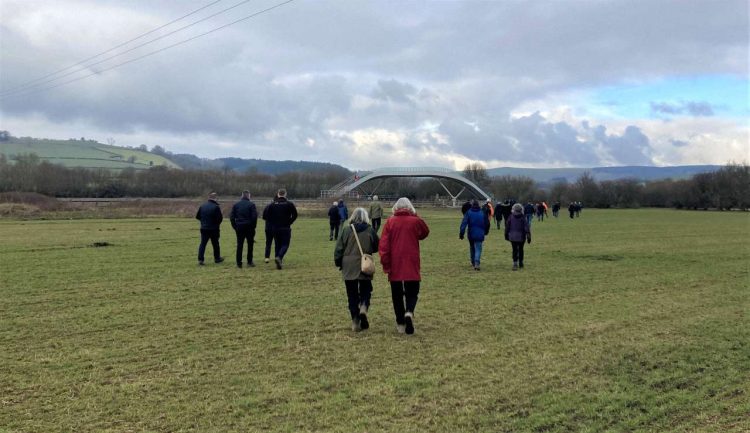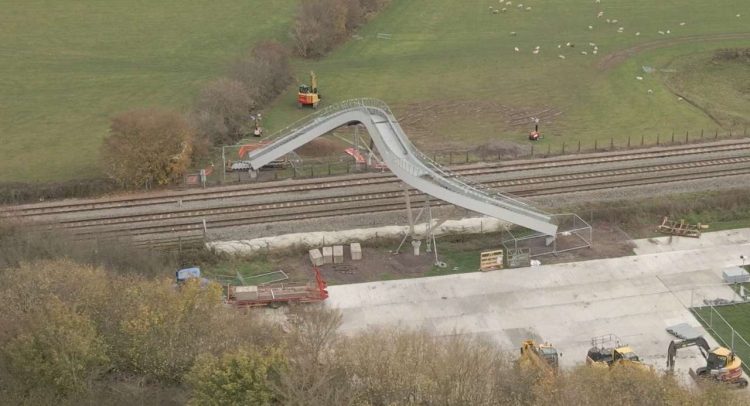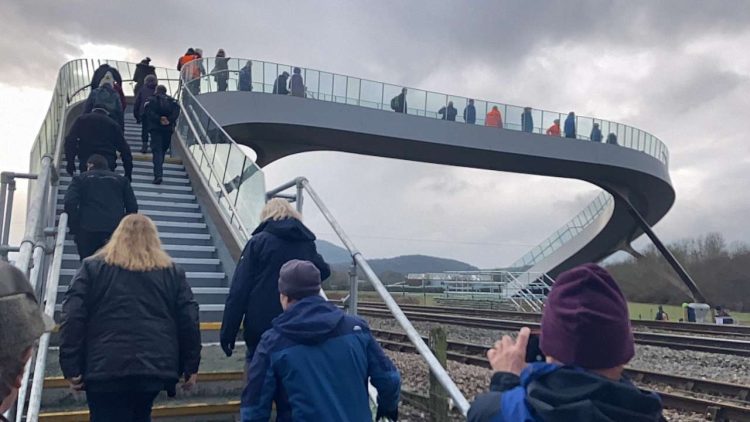An innovative low-carbon and lightweight bridge has been installed in a Shropshire village to provide a faster, more sustainable, and affordable option to allow the closure of a dangerous railway foot crossing.
The new bridge was designed by Network Rail and has the acronym FLOW, which stands for Fibre-reinforced polymer (FRP), Lower cost, Optimised design, Working bridge.
The name also reflects its striking and modular design. It has been installed at a rural crossing just north of Craven Arms, in the Shropshire hills, and was officially opened at a community event last Friday, 27th January.

The footbridge has replaced a dangerous level crossing that was closed on safety grounds several years ago because its location was such that pedestrians had no clear visibility of approaching trains. It is 21m long and cost around 40 per cent less than traditional steel structures. No concrete was used in its foundations, reducing its carbon footprint, and it is the weight of a traditional steel bridge, resulting in lower transportation and installation costs.

Most of the construction took place off-site so that installation could take place without disrupting passenger services. The bridge is equipped with a real-time structural health monitoring system (SHM) that records how it performs in operational use, which will enable the design to be improved and provide a more efficient maintenance regime, as well as tracking its use.

Andy Cross, programme manager at Network Rail Wales and Borders, played a key role in designing the bridge and said: “The flow bridge was designed, first and foremost, as a safety solution but our teams have also gone above and beyond to create a quicker and more sustainable option for the future of the railway.”
“Its versatile design means we have already started looking at fully accessible versions, with lifts and ramps, for other locations where that would be a suitable option.”
Nick Millington, interim route director at Network Rail Wales and Borders said: “We want to close as many dangerous level crossings as possible, and this new footbridge shows it can be done while saving tax-payers money and without the need to disrupt passengers’ journeys during installation.
“I’d like to thank everyone who contributed their time and effort to this innovative project.
“This prototype has the potential to transform railway crossings, making them safer, more affordable and fit for the future.”
Owen Thomas, R&D project manager at Network Rail said: “Thanks to the hard work of our research and development team at Network Rail, we’ve managed to create a prototype that demonstrates the versatility of composite materials in construction on the railway. Not only is FLOW durable and efficient but the design is also aesthetically pleasing which, I am glad to say, is feedback we’ve had from the local community in Craven Arms.”
79-year-old Michael Starr, a local rambler, is one of many who will benefit from the new footbridge, as it forms part of a popular walking route in the village. Michael said: “I think the bridge is a fantastic addition to the community, providing connectivity, once again, to our beautiful local countryside. We used to have to detour around a mile on this walking route after the level crossing was closed, so this really makes a difference.
“Network Rail has really listened to the community and showcased something for the future while maintaining safety on the railway.”





Responses
And the first ever footbridge to be built in that way. Compare to other footbridges.